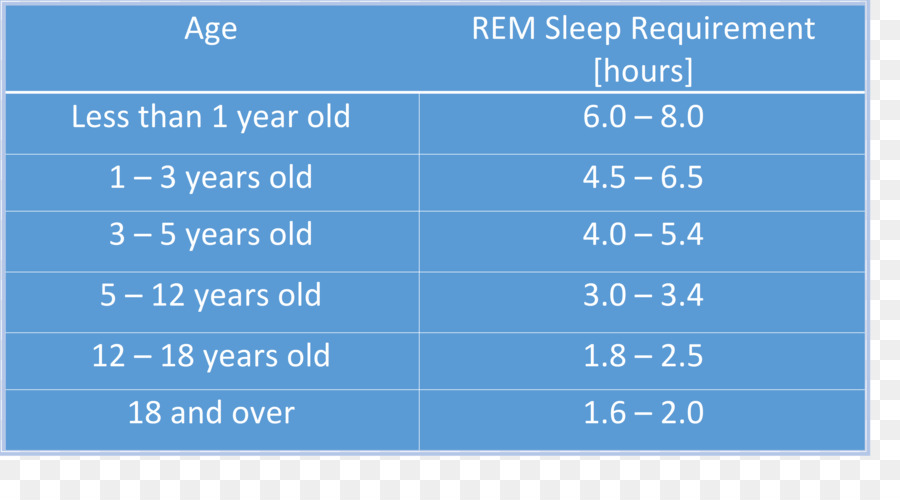Dating to relating reviews
Review of A Complete Guide to Dating, Mating, and Relating (9781480938984) — Foreword Reviews
Buy Locally via Bookshop
Buy on Amazon
Peter Marzano
Dorrance Publishing (Mar 28, 2017)
Softcover $11.00 (74pp)
978-1-4809-3898-4
Clarion Rating: 2 out of 5
This dating guide draws upon classic notions as it advises single men on how to find a partner.
Peter Marzano addresses how difficult it is to find a suitable mate in the new era of dating in his handbook A Complete Guide to Dating, Mating, and Relating.
Though it addresses both men and women who are on a quest to find lasting love with people of the opposite sex, the guidebook devotes most of its attention to single men, delivering advice on how to find, approach, and develop relationships with good women looking for the same thing. In its short space, it examines the history of singles clubs as well as what the dating scenes of previous eras looked like.
The book also concentrates on changing cultural norms and the internet, noting how they have impacted dating. Advice on appropriate places to meet people, a guide to flirting, and suggestions for progressing through the levels of dating are also included. The book laments that awareness of sexually transmitted infections has taken the fun and playfulness out of dating, causing some to avoid relationships altogether.
There is some good advice here, especially for those who are new to the dating scene after a divorce or the death of a spouse. With lists of where to meet potential mates and ways to approach them depending on the situation, the book could be useful for people baffled by the new world of singledom.
Tones of pessimism and sexism detract from this helpfulness. The book’s view of women is that many pretend to be single to manipulate or coerce drinks out of men. It also declares that many married people go to clubs and social venues to get away from their spouses and says that single mothers are not attractive mates.
The book’s language is conversational, if sometimes awkward. Errors in spelling and grammar are a distraction. Outdated advice is frequent, relating to sharing home phone numbers and calling to arrange a date; texting and messaging aren’t addressed. Questionable advice—such plastic surgery to increase self-esteem—is also present. Beyond these problematic suggestions are bits of advice that are fine but not surprising, like making eye contact to signal interest. Disproportionate focus is given to STIs, but without helpful suggestions for confronting the declared resultant lack of fun in dating; here, the book mostly suggests that singles relax and not worry too much.
A guide for the modern man to find a true partner, The Complete Guide to Dating, Mating, and Relating proffers some solid, if dated, advice.
Reviewed by Angela McQuay
Disclosure: This article is not an endorsement, but a review. The publisher of this book provided free copies of the book and paid a small fee to have their book reviewed by a professional reviewer. Foreword Reviews and Clarion Reviews make no guarantee that the publisher will receive a positive review. Foreword Magazine, Inc. is disclosing this in accordance with the Federal Trade Commission’s 16 CFR, Part 255.
The publisher of this book provided free copies of the book and paid a small fee to have their book reviewed by a professional reviewer. Foreword Reviews and Clarion Reviews make no guarantee that the publisher will receive a positive review. Foreword Magazine, Inc. is disclosing this in accordance with the Federal Trade Commission’s 16 CFR, Part 255.
Dated & Related - Rotten Tomatoes
Episode List
Critics Consensus
No consensus yet.
Not enough ratings to
calculate a score.
TOMATOMETER
Critic Ratings: 2No Score Yet
Audience Score
User Ratings: 4TOMATOMETER
Not enough ratings to calculate a score.
Avg Audience Score
Coming soon
Release Date:
SEE TOP TV SHOWS
Rate And Review
Verified
-
Rate this season
Oof, that was Rotten.
Meh, it passed the time.
It’s good – I’d recommend it.
Awesome!
So Fresh: Absolute Must See!
-
You're almost there! Just confirm how you got your ticket.
-
Step 2 of 2
-
Fandango
-
AMCTheatres.
 com or AMC AppNew
com or AMC AppNewEnter your Ticket Confirmation# located in your email.More Info
-
Cinemark Coming Soon
We won’t be able to verify your ticket today, but it’s great to know for the future.
-
Regal Coming Soon
We won’t be able to verify your ticket today, but it’s great to know for the future.

-
Theater box office or somewhere else
By opting to have your ticket verified for this movie, you are allowing us to check the email address associated with your Rotten Tomatoes account against an email address associated with a Fandango ticket purchase for the same movie.
You're almost there! Just confirm how you got your ticket.
-
-
Rate this season
Oof, that was Rotten.
Meh, it passed the time.
It’s good – I’d recommend it.
Awesome!
So Fresh: Absolute Must See!
-
-
Fandango
-
AMCTheatres.com or AMC AppNew
Enter your Ticket Confirmation# located in your email.More Info
-
Cinemark Coming Soon
We won’t be able to verify your ticket today, but it’s great to know for the future.

-
Regal Coming Soon
We won’t be able to verify your ticket today, but it’s great to know for the future.
-
Theater box office or somewhere else
By opting to have your ticket verified for this movie, you are allowing us to check the email address associated with your Rotten Tomatoes account against an email address associated with a Fandango ticket purchase for the same movie.

-
-
You haven’t finished your review yet, want to submit as-is?
You can always edit your review after.
-
Are you sure?
Verified reviews are considered more trustworthy by fellow moviegoers.
-
Want to submit changes to your review before closing?
Done Already? A few more words can help others decide if it's worth watching
They won't be able to see your review if you only submit your rating.
Done Already? A few more words can help others decide if it's worth watching
They won't be able to see your review if you only submit your rating.
The image is an example of a ticket confirmation email that AMC sent you when you purchased your ticket. Your Ticket Confirmation # is located under the header in your email that reads "Your Ticket Reservation Details". Just below that it reads "Ticket Confirmation#:" followed by a 10-digit number. This 10-digit number is your confirmation number.
This 10-digit number is your confirmation number.
Your AMC Ticket Confirmation# can be found in your order confirmation email.
Episodes
Dated & Related: Season 1 PhotosView All Photos
Tv Season Info
Cast & Crew
Melinda Berry
Host
Leon Wilson
Executive Producer
Ed Sleeman
Executive Producer
Saul Fearnley
Executive Producer
Jimmy Fox
Executive Producer
News & Interviews for
Dated & RelatedNew on Netflix in September 2022
Episodes
All Critics (2) | Fresh (1) | Rotten (1)
Full Review… Melissa Camacho Common Sense Media Full Review… Johnny Loftus DeciderView All Critic Reviews (2)
Audience Reviews for
Dated & Related: Season 1-
6d ago
-
6d ago
Caylee W
-
Nov 30, 2022
-
Sep 20, 2022
Xivono C
See all Audience reviews
The percentage of approved Tomatometer critics who have given this title a positive review. When individual episodes have scores, they will influence the final season score.
When individual episodes have scores, they will influence the final season score.
About Audience Score
There is no Audience Score because there are not enough user ratings at this time.
Go back
More trailers
Acquaintance with transformers. Part 2 / Habr
We publish the second part of the material about transformers. In , the first part of dealt with the theoretical foundations of transformers, examples of their implementation using PyTorch were shown. Here we will talk about what place the layers of internal attention occupy in neural network architectures, and how transformers are created that are focused on solving various problems.
Development of transformers
Transformer is not only a layer of inner attention. This is the architecture of machine learning. In fact, the question of what can and cannot be called a "transformer" is not entirely clear, but we will use the following definition here:
A transformer is any architecture designed to handle related sets of entities, such as tokens in a sequence of pixels in an image, where these entities interact only through an internal attention mechanism.

As with other mechanisms used in machine learning, such as convolutional layers, a more or less standard approach has emerged for incorporating internal attention mechanisms into larger neural networks. Therefore, we will start by designing the mechanism of internal attention as an independent block that can be used in various networks.
Transformer block
Basic transformer blocks are approached in different ways, there are some variations, but most of these blocks are structured approximately as shown below.
The base block of the transformerIt turns out that in this block, sequentially, the input data passes through the following layers:
-
The layer of internal attention.
-
Normalization layer.
-
Forward propagation layer (one multilayer perceptron per vector).
-
Another layer of normalization.
The lines bypassing the layers of internal attention and direct propagation, located before the layers of normalization, are residual connections. The order of the components in the transformer block is not fixed. The important points here are the combination of an internal attention layer with a local forward propagation layer, the presence of normalization layers and residual connections.
The use of normalization layers and residual connections are standard techniques used to increase the speed and accuracy of training deep neural networks. Normalization applies only to the embedding dimension.
This is what a transformer block looks like in PyTorch:
class TransformerBlock(nn.Module): def __init__(self, k, heads): super().__init__() self.attention = SelfAttention(k, heads=heads) self.norm1 = nn.LayerNorm(k) self.norm2 = nn.LayerNorm(k) self.ff = nn.Sequential( nn.Linear(k, 4*k), nn.ReLU(), nn.Linear(4*k, k)) def forward(self, x): attended = self.attention(x) x = self.norm1(attended + x) fedforward = self.ff(x) return self.norm2(fedforward + x)
We, for no particular reason, decided to make the forward propagation hidden layer 4 times larger than the input and output layers. Smaller values may well be suitable here, this will help save memory, but this layer should be larger than the input and output layers.
Transformers and classification problems
The simplest transformer we can create is a sequence classifier. We will use a dataset that is a sentiment classification of texts from IMDb. Namely, the elements of this set are represented by movie reviews, divided into sequences of tokens (words). Reviews are assigned one of two classification labels: positive and negative . The first corresponds to positive reviews, the second to negative ones.
The heart of this architecture is a fairly simple system, which is a long chain of transformer blocks. All we have to do to create a working classifier is figure out how to pass input sequences to the system, and how to transform the final output into a classification result.
The full code for this experiment can be found at here . In this material, we do not touch on the issues of primary data processing. By analyzing the code, you can learn about how the data is loaded and prepared for further use.
Output: classification result
Most often, sequence classifiers are created from layers that perform sequence-to-sequence transformation. This is done by applying the GAP (Global Average Pooling, global averaging pooling) operation to the final output sequence and mapping the result to a classification vector processed using the Softmax function.
General scheme of a simple transformer used for sequence classification. The output sequence is averaged to produce one vector representing the entire sequence. This vector is projected onto a vector containing one element per class and processed by the Softmax function to obtain probabilitiesInput: using positional embeddings or encodings
We have already talked about the principles on which embedding layers are based. These are the ones we will use to represent words.
But, as we have already said, we superimpose layers that are equivariant to permutations, and the resulting global averaging pulling is invariant to permutations. As a result, the entire network is invariant to permutations. Simply put: if you mix words in a sentence, the classification result will be the same as for the original application, regardless of what weights the network training led to finding. It is obvious that we would like our most modern language model to react at least a little to a change in word order, so it needs to be improved.
To do this, a fairly simple solution can be applied: another vector of the same length is created representing the position of the word in the current sentence, which is added to the word embedding. This can be done in two ways.
The first is the use of positional embeddings. We simply include positions in the embedding, just like we did with words. For example, we created embedding vectors and , and now we will create vectors and . And so - up to the values corresponding to the expected length of the sequence. The disadvantage of this approach is that in the process of training the model, we will need to process the sequences of all lengths found in the set, otherwise the model will not learn how to perceive the corresponding positional embeddings. And the strengths of this solution are that it works very well and that it is easy to implement.
The second is the use of positional encodings. They work in the same way as positional embeddings, except that the model is not asked to process positional vectors during training. We just choose some function f: used to map positions to vectors containing real values, and let the network figure out how to interpret these encodings. The advantage here is that if the function is chosen well, the network should be able to work with sequences that are longer than those that were offered to it during the training process (the model is unlikely to show good results on them, but at least you can will check it on such sequences). And the disadvantage of this approach is that the choice of the encoding function affects the complex hyperparameter, which slightly complicates the implementation of the system.
We, for the sake of simplicity, will use positional embeddings in our implementation of the classifier transformer.
PyTorch implementation of a classifier transformer
Here is a full-fledged text classification transformer implemented using PyTorch tools:
class Transformer(nn.Module): def __init__(self, k, heads, depth, seq_length, num_tokens, num_classes): super().__init__() self.num_tokens = num_tokens self.token_emb = nn.Embedding(num_tokens, k) self.pos_emb = nn.Embedding(seq_length, k) # The sequence of transformer blocks to which # assigned the responsibility of solving complex problems tblocks = [] for i in range(depth): tblocks.append(TransformerBlock(k=k, heads=heads)) self.tblocks = nn.Sequential(*tblocks) # Adjust the correspondence of the final output sequence to the unnormalized values obtained for various classes self.toprobs = nn.Linear(k, num_classes) def forward(self, x): """ :param x: A (b, t) integer value tensor representing words (in some predetermined dictionary).:return: A (b, c) log probability tensor over classes (where c is the number of classes). """ # generate token embeddings tokens = self.token_emb(x) b, t, k = tokens.size() # generate positional embeddings positions = torch.arrange(t) positions = self.pos_emb(positions)[None, :, :].expand(b, t, k) x = tokens + positions x = self.tblocks(x) # Perform averaging pooling over t dimensions and project # on probabilities corresponding to classes x = self.toprobs(x.mean(dim=1)) return F.log_softmax(x, dim=1)
This transformer, at a depth of 6 and with a maximum sequence length of 512, achieves a text classification accuracy of about 85%, which is comparable to the results of RNN models (models based on recurrent neural networks, Recurrent Neural Network), provided that the training of the transformer goes much faster. In order to bring the results of the transformer to a level approaching the human level, it is necessary to train a much deeper model on a much larger amount of data. We'll talk about how to do this later.
Text-generating transformers
The next trick we're going to try is using an autoregressive model. We will teach a single character transformer to predict the next character in a sequence. Training such a transformer is simple (and this technique appeared long before the advent of transformers ). We give the sequence-to-sequence model a sequence of characters and ask it to predict, for each position in the sequence, the next character. In other words, the target output sequence is the same sequence shifted to the left by one character.
The general scheme of the transformer that generates texts If we used RNN, then now we would already have everything we need, since such networks cannot look into the "future" of input sequences: the output and depends only on the inputs from 0 to i . And in the case of transformers, the output depends on the entire input sequence, as a result, predicting the next character becomes ridiculously simple: just take it from the input sequence.
In order to use the internal attention mechanism as an autoregressive model, it is necessary to make sure that the model cannot look into the “future”. This is done by applying a mask to the dot product matrix before applying the Softmax function. This mask disables all elements above the diagonal of the matrix.
Masking the internal attention mechanism matrix ensures that elements will only respond to input elements that come before them in sequence. Note that the multiplication symbol is not used here in its usual sense: we are actually setting the masked elements (white squares) to ∞.Since we want the corresponding elements to become zero after applying the Softmax function, we set them to ∞. This is what it looks like in PyTorch:
dot = torch.bmm(queries, keys.transpose(1, 2)) indices = torch.triu_indices(t, t, offset=1) dot[:, indices[0], indices[1]] = float('-inf') dot = F.softmax(dot, dim=2) After we have limited the capabilities of the internal attention module in this way, the model can no longer “peep” into the input sequence.
We train the model on the standard dataset enwik8 (taken from the submissions of the Markus Hatter data compression competition), which contains 10 8 characters of Wikipedia text (including markup). In the learning process, we generate text packets by randomly selecting subsequences from the data.
We train the model on sequences of length 256 using a system of 12 transformer blocks and 256 embedding measurements. After about 24 hours of training the model on an RTX 2080Ti video card (about 170 thousand packets of length 32), we allowed the model to generate text based on the initial fragment of 256 characters. To generate each symbol, we passed the model 256 previous symbols, and looked at what it would offer as the next symbol (the last output vector). When choosing a symbol, the method " temperature sampling » with a value of 0.5. After selecting the next character, we moved on to the next character.
The model produced the following text (the initial fragment is bold):
1228X Human & Rousseau.
Because many of his stories were originally published in long-forgotten magazines and journals, there are a number of [[anthology|anthologies]] by different collators each containing a different selection. His original books ha ve been considered an anthologie in the [[Middle Ages]], and were likely to be one of the most common in the [[Indian Ocean]] in the [[1st century]]. As a result of his death, the Bible was recognized as a counter-attack by the [[Gospel of Matthew]] (1177-1133), and the [[Saxony|Saxons]] of the [[Isle of Matthew]] ( 1100-1138), the third was a topic of the [[Saxony|Saxon]] throne, and the [[Roman Empire|Roman]] troops of [[Antiochia]] (1145-1148). The [[Roman Empire|Romans]] resigned in [[1148]] and [[1148]] began to collapse. The [[Saxony|Saxons]] of the [[Battle of Valasander]] reported the y
Pay attention to the fact that the syntactic constructions used in Wikipedia for formatting links are correctly applied here, that adequate texts are given in the links. And most importantly, this text has at least some thematic coherence. Namely, the generated text adheres to topics related to the Bible and the Roman Empire, and uses related terms in various places. Of course, our model is far from more advanced systems like GPT-2 , but even here the obvious advantages of transformers over similar RNN models are visible: faster training (a comparable RNN model would take many days to train) and better long-term consistency.
If you're wondering what the "Battle of Valasander" is, then know that this battle seems to have been invented by the network itself.
The model, in the described state, provided a compression level corresponding to 1.343 bits per byte on the test set, which is not so different from the advanced 0.93 bits per byte achieved by the GPT-2 model (more on that later).
Transformer Design Features
In order to understand why transformers are made the way they are, it is helpful to understand the basic factors that go into the design process. The main goal of transformers was to solve the problems of architecture, which before their appearance was considered the most modern. We are talking about RNN. Usually it is LSTM (Long Short-Term Memory, a long chain of short-term memory elements) or GRU (Gated Recurrent Units, managed recurrent blocks). Here is diagram deployed recurrent neural network.
A serious weakness of this architecture lies in the recurrent connections (shown in blue lines). While this allows information to propagate through the sequence, it also means that we can't compute the value a cell produces at the time step until we compute its value at time step - 1. Compare this to a one-dimensional convolution.
One-dimensional convolution In this model, all output vectors can be computed in parallel. This makes convolutional networks much more efficient than networks with recurrent connections. The disadvantage of such networks, however, is that they are severely limited in modeling long-term dependencies. In one convolutional layer, only words can interact with each other, the distance between which does not exceed the size of the convolution kernel. To ensure the processing of dependencies located at large distances, you need to superimpose several convolutional layers on top of each other.
Transformers is an attempt to take the best of both worlds. They can model dependencies over the entire range of the input sequence just as easily as they can for words next to each other (in fact, without using position vectors, they won't even see the difference between such dependencies). But at the same time, they do not use recurrent connections, as a result, the entire model can be calculated very efficiently using the same approach that is used when working with feed-forward networks.
The remaining features of the transformer architecture are based, for the most part, on a single consideration. This is the depth of the network. At the heart of the architectures of most transformers is the desire to train a large "stack" of transformer blocks. Note, for example, that there are only two places in the transformer where non-linear data transformations are performed. This is where the Softmax function is applied in the internal attention block, and where the ReLU (Rectified Linear Unit) is applied in the feedforward layer. The rest of the model consists entirely of linear transformations, which does not interfere with the use of a gradient.
I believe that the normalization layer is also non-linear, but it is the same non-linearity that actually contributes to the stability of the gradient as it propagates back through the network.
To be continued…
Oh, come to work with us? 😏We at wunderfund.io have been engaged in high-frequency algorithmic trading since 2014. High-frequency trading is a continuous competition between the best programmers and mathematicians around the world. By joining us, you will become part of this exciting fight.
We offer interesting and challenging tasks in data analysis and low latency development for enthusiastic researchers and programmers. Flexible schedule and no bureaucracy, decisions are quickly made and implemented.
Now we are looking for plus developers, pythonists, data engineers and ml-risers.
Join our team.
How to write a literature review on a research topic
Literature review on a research topic is an important and obligatory part of every scientific work. The literature review helps to bring the theoretical basis of the study, to assess the elaboration of the topic, to justify the choice of the direction of the study. The literature review can be included in the introduction or become an independent chapter of the scientist's scientific work.
Literature review for scientific article
When preparing publications for scientific journals, the inclusion of a literature review in the text of the article is a mandatory requirement for each publication. The literature review is not a list of the literature used during the work on the article. It is an analysis of the literature used, the formulation of the main ideas, trends, the use of material to substantiate the theoretical basis of the study.
However, it should be remembered that the list of references is not identical to the bibliography, i.e. not all the material accumulated on the chosen topic. This is a list of those works that were involved by the author in order to develop and substantiate his argument in the framework of his scientific article, and which, as a result, are cited in this scientific article.
Literature review for an article published in a foreign publication should include the works of scientists known for their achievements in science and having a large percentage of citations of their works. It is this indicator that can help determine whether the work is a fundamental work and contains relevant significant ideas, or is a mediocre publication. Review and analysis of the literature is given in the introduction to the work, in the body of the article or in the discussion section - it all depends on the structure of the presentation of the material chosen by the author.
Initially, the literature review allows the researcher to evaluate the elaboration of the topic and adjust - narrow or expand - the object of his research. In the process of bibliographic search, the author may reveal that some aspect of science has not been sufficiently developed, although it is very significant for one reason or another, and devote his work to the study of this topic.
The quality of bibliographic search largely determines the content of an author's article: the more effectively a researcher is able to work with arrays of documents and databases, the more accurately he will formulate the topic of his future publication.
Why is a literature review needed in a study?
A review of the literature in a scientific work is necessary in order to show the experience of the author's predecessors and to identify gaps in the study of the chosen topic. In addition, the purpose of the literature review is to ensure that the author does not work in vain by repeating the research of other scientists, but is able to contribute and increase scientific knowledge on the actual problem. A scientific review of the literature on the research topic is necessary in order to:
- analyze the available materials and form a new approach to the problem;
- verify the results and conclusions based on the results of their own research;
- to demonstrate the difference between the author's research and already published works, i.
e. demonstrate scientific novelty and scientific contribution;
- formulate the relevance of the study;
- justify the significance of the problem;
- to master the terminology on the relevant issues;
- identify the main research methods used to study the problem.
When compiling a litho review, it is worth distinguishing between the type of materials. The literature includes works in which other researchers consider the same or similar issues. Do not confuse literature with the category "sources", which includes archival materials, official documents, photographs, maps, video recordings and art reproductions.
In addition, interviews, personal diaries, and so on can be included in the same group. With the development of modern technologies, the list of sources began to include both website pages and the content of TV shows - the rules for describing these resources are reflected in separate sections of industry-specific GOSTs 7. 1-2003, 7.82-2001 and R 7.0.100-2018.
Literature refers to all materials that discuss or analyze the research topic. Scientific literature can be represented by monographs, articles, conference materials, dissertations and abstracts to them.
Literature and sources are cited according to the rules for the design of bibliographic lists and in compliance with the citation rules.
Literature analysis as a research method
A review of the literature on a specific issue can also become an independent topic of scientific work - this kind of research is carried out when the topic is very extensive, difficult to study and there are difficulties in systematizing sources or literature on the topic, on the contrary, very little.
Literature review on the topic of research can be built as a retrospective, which examines the main theoretical works on the topic of research, describes the main schools, directions and currents, as well as the main works of representatives of these schools.
The method of analysis of literary sources is used at the initial stage of the study, when the initial acquaintance with the literature takes place. In the future, work with the literature becomes deeper: the author turns to the literature to clarify, confirm or refute the results obtained during the study. The content of the analytical review of the literature makes it possible to judge the level of competence, critical thinking, and the general level of knowledge of the author of a scientific work.
How to write a literary review?
By the time of writing a serious scientific work, the authors already have the skills necessary for effective search and processing of information. To write a litho review, you need:
- be able to use traditional library catalogs and databases, as well as perform online searches;
- have the ability to analyze and systematize the material;
- correct quoting.
Literary review should not become a retelling of the content of already published works - the author needs to present the works of scientists in the context of the vector of their own research.














